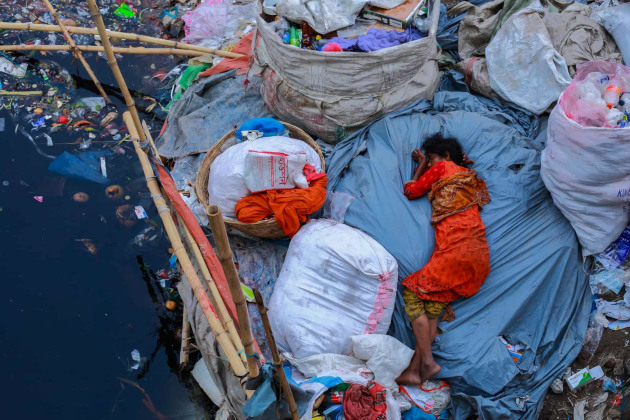2019 Environmental Photographer of the Year images reveal the ‘raw reality’ of climate change
An international showcase for the very best in environmental photography, the annual Environmental Photographer of the Year award is all about “highlighting the terrible impacts being wrought on our planet by its most dominant species”. According to the competition organisers, The Chartered Institution of Water and Environmental Management (CIWEM), it also “celebrates humanity’s innate ability to survive and innovate, lending hope to us all that we can overcome challenges to live sustainably”.
The winning images were revealed on the same day as the UN’s Climate Action Summit in New York, and the CIWEM’s press release described the global climate crisis depicted in many of the photographs: “These winning photographs reveal the raw reality of how people and wildlife are struggling with the impacts of climate change all around the world. This award exists to inspire change from political leaders, decision makers, and the general public.”
The CIWEM has also stated that “the competition supports the urgent calls to action of the United Nations Sustainable Development Goals and recognises the intricate interconnected nature of development, poverty reduction, equality, security, and climate action, and the unprecedented effort from all sectors of society needed to tackle the defining issues of our time”. The ultimate goal of the images recognised by the competition is that they will inspire people around the world to start taking care of our environment.
The awards showcases the very best in environmental photography across a number of categories.
Winners
Environmental Photographer of the Year – SL Shanth Kumar

Sustainable Cities Winner – Eliud Gil Samaniego

Water, Equality, and Sustainability Winner – Frederick Dharshie Wissah

Climate Action and Energy Winner – J. Henry Fair

Niederzier, Germany.
Changing Environments Winner – Sean Gallagher

Young Environmental Photographer of the Year – Neville Ngomane

12-24 months to effectively deter hunters. Limpopo, South Africa.
On the shortlist

Invisible. In the Sisdol landfill in Nepal, waste pickers rummage through rubbish all day looking for materials or valuables to sell. This temporary landfill located near Kathmandu has been in operation since 2005. Today, it is running out of capacity.

Trash. Underwater cleaning in the Bosphorus as part of the Zero Waste Blue project. Istanbul, Turkey.

Sleep Fatigue. A woman sleeps on a dirty riverbank, Dhaka, Bangladesh.

Sweet Dreams. A girl sleeps on a desk inside her schoolroom. Extreme rains have tripled in the Sahel in the last 35 years because of global warming. Climate change has caused 70 episodes of torrential rains in the last decade although the region also suffers severe droughts. Burkina Faso.

The Plastic Quarry. A boy plays with a plastic bag. About 380m tonnes of plastic is produced worldwide each year. Production increased exponentially from 2.3m tonnes in 1950 to 448m tonnes by 2015. Every day approximately 8m pieces of plastic pollution find their way into our oceans. Ouagadougou, Burkina Faso.
2019 judges
- Liz Bonnin
- Michael AW
- Dallas Campbell
- Ashley Cooper
- Georgina Pavelin
- Terry Fuller

Get more stories like this delivered
free to your inbox. Sign up here.


